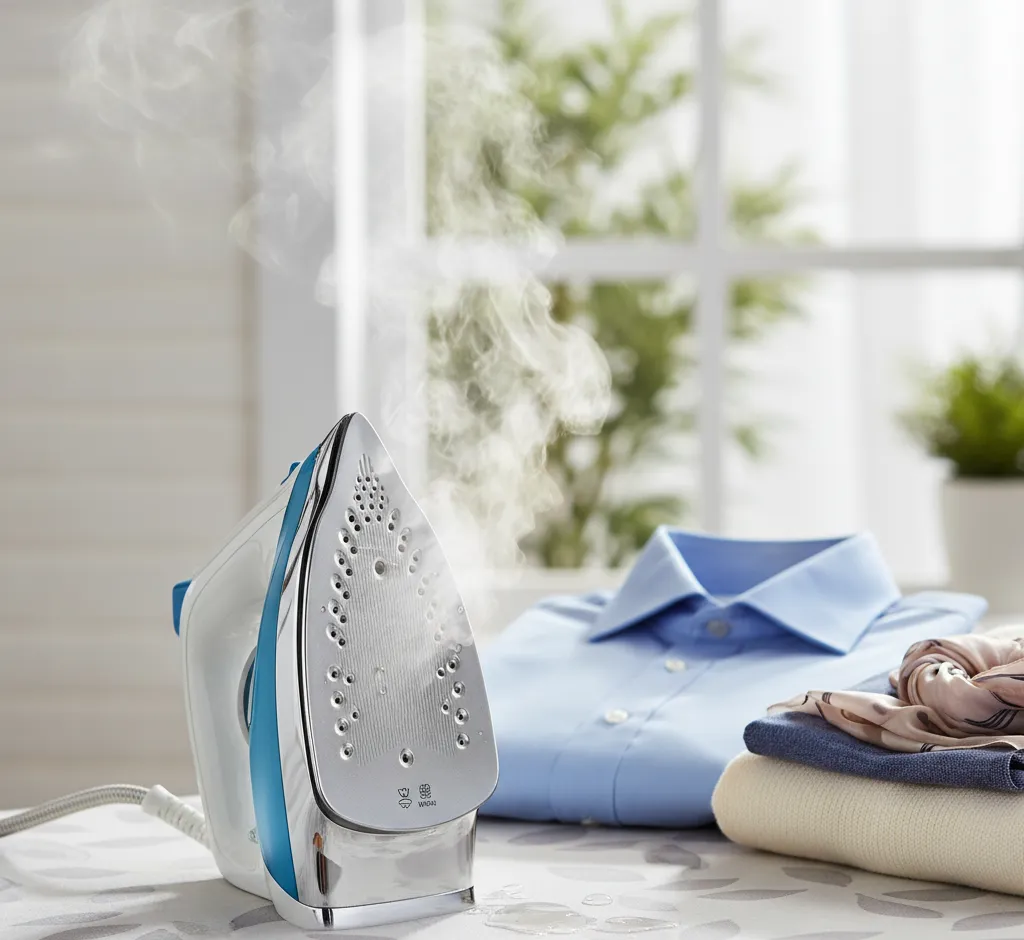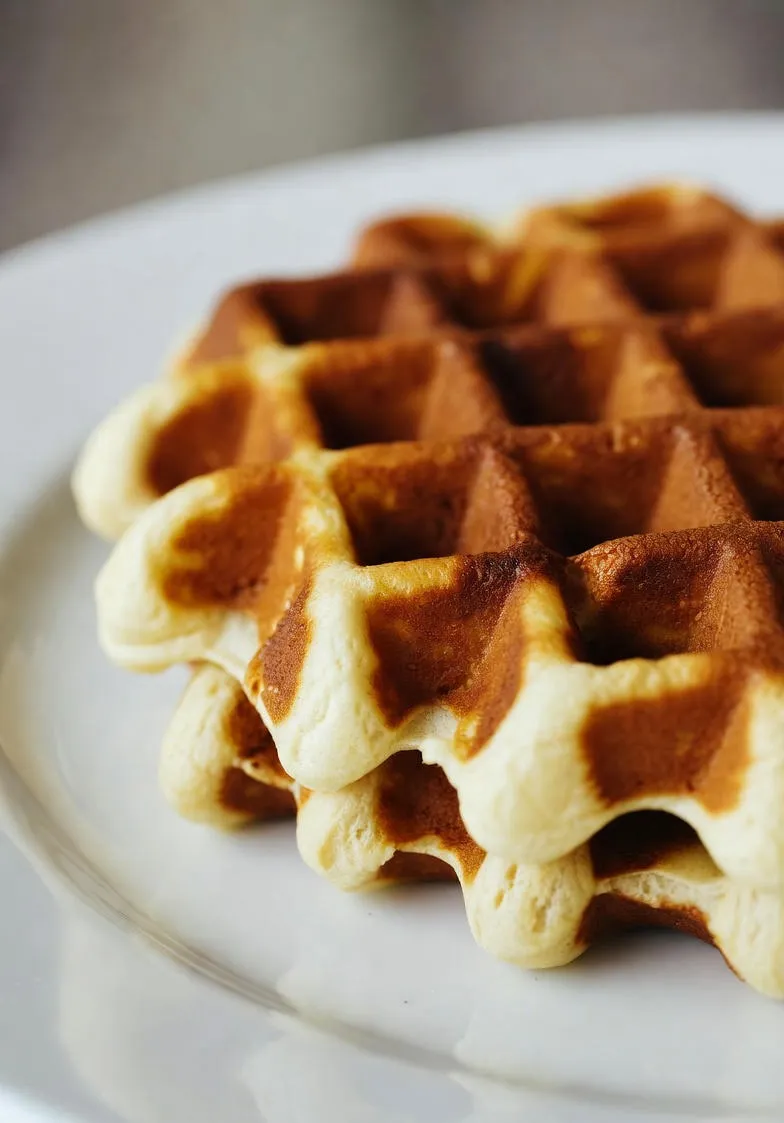Mastering the Press: The Ultimate Guide to Steam Irons with Adjustable Steam Settings
Unlock the full potential of your iron with our guide to adjustable steam settings. Learn how to match steam levels to fabrics for faster, safer, and professional ironing results.

Ironing is often viewed as a binary household chore: either the clothes are wrinkled, or they are pressed. However, the bridge between a disheveled garment and a crisp, professional look is rarely just about heat—it is about the mastery of moisture. Specifically, the magic lies in the adjustable steam settings of modern irons. While heat flattens fibers, steam relaxes them, allowing them to be reshaped without damage. Understanding how to utilize adjustable steam settings can transform ironing from a tedious struggle into a satisfying, efficient art form.
In this comprehensive guide, we will dismantle the mechanics of steam irons, explore why one steam setting does not fit all, and provide a detailed roadmap on how to leverage variable steam controls to extend the life of your wardrobe.
The Mechanics of Steam: Why It Matters
To understand why adjustable settings are a feature worth paying for, we must first understand what steam actually does to fabric. Fabrics are made of polymer chains. When these chains are dry and cool, they are locked in place (often in the shape of a wrinkle). To remove the wrinkle, you need to loosen these chains.
Heat alone can do this, but it requires dangerously high temperatures that risk scorching the material. Steam acts as a catalyst. The moisture penetrates the core of the fiber, causing the polymer chains to relax at lower temperatures. Once the fiber is relaxed, the weight and heat of the soleplate press it flat, and as the moisture evaporates, the fiber locks into its new, smooth shape.
However, not all fibers absorb moisture at the same rate, nor do they react to heat effectively. This is where adjustable steam settings become the most critical feature on your appliance.
Decoding the Settings: What is Adjustable Steam?
When we talk about adjustable steam, we are referring to the ability to control the flow rate of water vapor being released through the soleplate. This is usually measured in grams per minute (g/min). A standard steam iron might offer a range from 0 g/min (dry) up to 50 g/min or more for continuous steam.
The Variable Steam Dial
Most irons feature a dial, slider, or digital menu that allows you to toggle between:
- No Steam (Dry): The valve is closed. Essential for delicate synthetics.
- Low/Eco Steam: A gentle release of vapor.
- Medium Steam: The standard setting for everyday blends.
- High/Max Steam: Maximum saturation for stubborn fibers like linen.
Continuous Steam vs. Steam Burst
It is vital to distinguish between the continuous steam setting (which you adjust via the dial) and the steam burst (or shot of steam). The adjustable setting controls the constant background humidity while you iron. The steam burst is a manual override—usually a button you press to release a massive, sudden cloud of steam (often 150g to 250g) to penetrate multiple layers of denim or crush a particularly sharp crease.
The Fabric Guide: Matching Steam to Material
Using the maximum steam setting on every garment is a rookie mistake that leads to water spitting, water spots, and potentially damaging delicate fibers. Here is a deep dive into how to match your adjustable settings to specific fabrics.
1. Synthetics (Acrylic, Nylon, Polyester)
Setting: Dry or Very Low Steam
Synthetic fibers are essentially plastic. They are hydrophobic, meaning they do not absorb water well. If you blast polyester with high steam, the moisture has nowhere to go. It will sit on the surface, cooling the soleplate and causing the iron to drip. Furthermore, high steam often accompanies high heat, which can melt synthetics. For these materials, use the dry setting or the lowest possible steam output to provide just enough lubrication for the iron to glide.
2. Silk and Delicates
Setting: Low Steam (with caution)
Silk is a protein fiber that is incredibly strong but visually fragile. Water spots on silk can look like permanent stains. If your iron has a high-quality anti-drip system, you can use a low steam setting to relax wrinkles. However, the safest route for silk is often to use the vertical steaming method (discussed later) where the soleplate never touches the fabric, or to iron on a low setting with a pressing cloth.
3. Wool and Cashmere
Setting: Medium to High Steam
This is counter-intuitive for many. Wool requires moisture to reshape, but it hates direct, crushing heat. If you press a hot, dry iron onto wool, you will crush the fibers and create a shiny patch (often called "shining"). The solution is steam. Use a medium-to-high steam setting but hover the iron slightly above the fabric or use a pressing cloth. The steam relaxes the wool fibers, allowing them to bounce back to their original shape without being flattened.
4. Cotton
Setting: High Steam
Cotton is a thirsty cellulose fiber. It requires significant heat and moisture to change its shape. When ironing dress shirts, bed linens, or t-shirts, you should crank the adjustable steam setting to high. The heavy steam output penetrates the thick weave, making the ironing process significantly faster. Without high steam, you will find yourself going over the same wrinkle five or six times.
5. Linen
Setting: Maximum Steam + Water Spray
Linen is the boss level of ironing. It is stiff, stubborn, and prone to sharp creasing. It requires the maximum steam setting your iron can muster. In fact, the adjustable steam alone is often insufficient. Professional launderers recommend dampening the linen with a spray bottle before applying the iron set to maximum steam. The combination of internal moisture and external steam is the only way to achieve a crisp finish on linen.
Advanced Features Linked to Adjustable Steam
As technology advances, the simple steam dial has evolved. When shopping for an iron, or trying to understand your current one, look for these related technologies.
Auto-Adjust Technology
Some premium models have removed the manual dial entirely. These irons use sensors to detect the movement of the iron and the temperature of the soleplate. They automatically adjust the steam output to match the temperature. While convenient, purists often prefer manual controls to have the final say on how much moisture a garment receives.
Vertical Steaming Capability
A high-quality adjustable steam system allows for vertical steaming. This is where you hold the iron upright and use the steam burst or continuous high steam to smooth hanging curtains, suits, or delicate dresses. This feature relies heavily on a powerful steam generator that can pump water horizontally without leaking.
Pressurized Steam Generators
While this article focuses on standard steam irons, it is worth noting that steam generator irons (the ones with a separate large water tank) take adjustable steam to a new level. They use pressurized boilers to force steam through the fabric. On these units, adjustable settings often control pressure (bars) rather than just flow rate, providing a much deeper clean and press.
Troubleshooting: When Adjustable Steam Goes Wrong
Even the best irons can act up. Usually, issues with steam output are user errors rather than mechanical failures. Here is how to troubleshoot common problems.
The "Spitting" Phenomenon
The most common complaint is water dripping or spitting from the holes. This almost always happens because of a mismatch between temperature and steam settings.
The Rule of Thumb: Low Temp = No Steam. High Temp = High Steam.
If you set the temperature dial to "Silk" (low) but the steam dial to "Max," the soleplate is not hot enough to vaporize the water fast enough. The result? Leaking hot water.
Calc and Scale Buildup
If your adjustable steam dial is set to high, but only a wisp of vapor is coming out, your vents are likely clogged with limescale. Mineral deposits from tap water block the steam chamber. Regular use of the iron’s "Self-Clean" or "Calc-Clean" function is non-negotiable. If you live in a hard water area, consider mixing your tap water with 50% distilled water to protect the steam mechanism.
The Efficiency Factor: Time vs. Quality
Why bother adjusting settings? Why not just leave it on medium? Efficiency.
By utilizing the correct adjustable steam settings, you significantly reduce ironing time. Ironing denim on a low steam setting is an exercise in futility; you are fighting the fabric's natural structure. Conversely, ironing synthetics on high steam wastes water and risks fabric damage. Mastering these settings means fewer passes over the fabric, less arm strain, and a lower electricity bill.
Buying Guide: Specifications to Look For
If you are in the market for a new iron and prioritize steam performance, look for these specifications on the box:
- Continuous Steam Output: Look for at least 35–50 g/min. Anything less will struggle with jeans and cotton.
- Steam Boost/Shot: Look for at least 150g. This provides the power needed for stubborn creases.
- Water Tank Capacity: High steam settings consume water rapidly. A tank larger than 300ml is recommended to avoid constant refilling.
- Anti-Drip System: Essential for utilizing variable steam settings without water leaks.
Conclusion
The adjustable steam setting on your iron is not a decorative feature; it is the control center for garment care. It allows you to customize the ironing experience to the unique chemical structure of the fabric, preserving the integrity of delicate silks while conquering the stubborn weave of heavy linens.
By moving beyond the default settings and actively managing your steam output, you ensure that your clothes not only look professionally pressed but also last longer. The next time you set up your ironing board, take a moment to check the fabric care label, adjust your steam dial accordingly, and watch as the wrinkles vanish with a satisfying hiss of perfectly applied steam.


